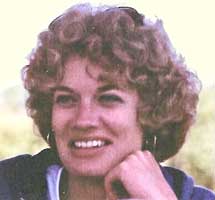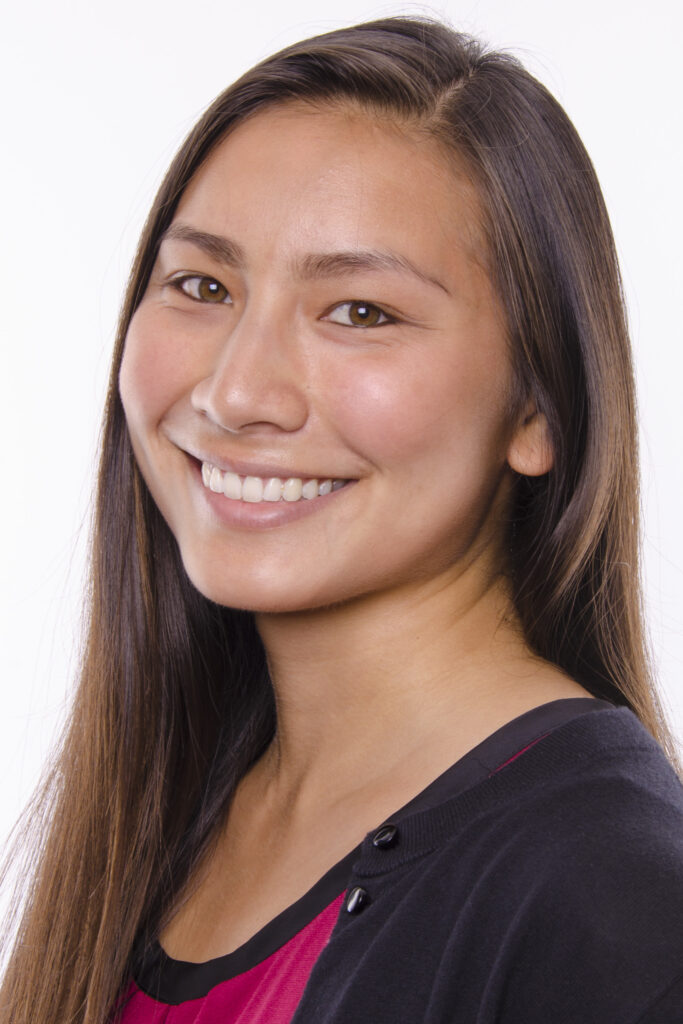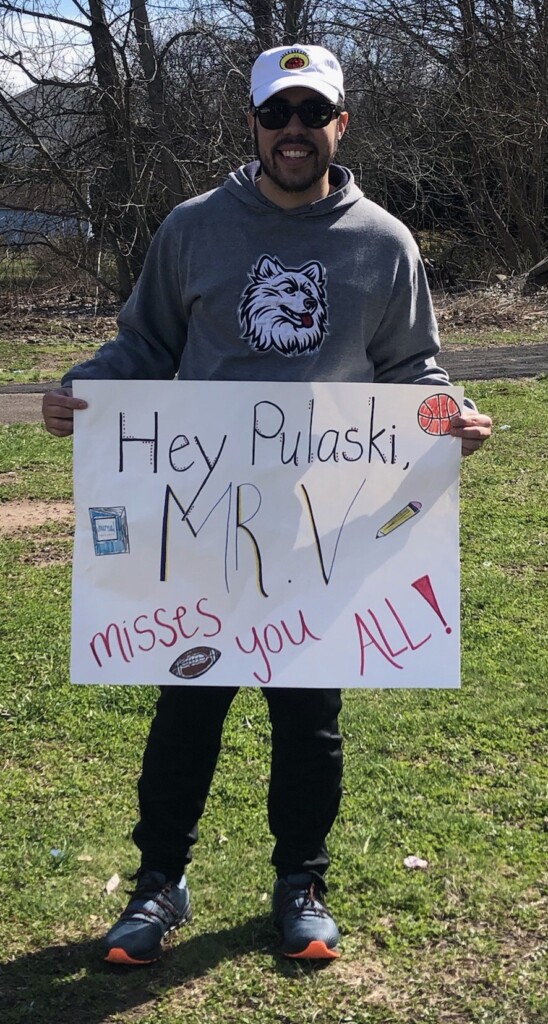Sandy Fraioli is taking an ambitious, long-term approach to increasing diversity in the teacher corps. She is starting in high school.

In a pre-Covid-19 photo, Sandy Fraioli, front left, with Colleen Moffett-Mals, who is teaching the Rising Educators course, and their students, front row from left, Shaza Oufi, Lizmarie Maldonado, Deseriah Castillo and Romona Hall, and back row from left, Evan Vinas, Ethan Roy and Maram Aljahmi.
For seven years Ms. Fraioli has led a program to encourage students at New Britain High School – particularly students of color — to pursue careers in teaching. Since then, students from NBHS have enrolled in teacher-preparation programs at Central, Eastern, Southern Connecticut State Universities, University of Saint Joseph, University of Hartford, UConn and Arizona State. And some have graduated and have become teachers.
Sandy Fraioli is Lead Teacher, Family and Consumer Sciences, at NBHS and Teacher Leader in Residence at the Connecticut State Department of Education.
Expanding Into Eight More Districts
Three years ago Ms. Fraioli established a partnership with Educators Rising, a national organization that provides a curriculum of courses to motivate high school students and help them to prepare for careers in education.
This semester, the Connecticut State Department of Education is launching EdRising initiatives in eight additional school districts, Danbury, Hamden, Hartford, Meriden, New Haven, New London, Stamford, Waterbury and Windsor. Ms. Fraioli hopes to have the same success in these districts that she has achieved in New Britain.
Ramona Hall, who took the course at NBHS, has been admitted to UConn, where she plans to enroll in the Neag School of Education.
“The Educators Rising course definitely helped me to decide what I want to do,” she said. “I had so many good experiences.” As part of the class, she volunteered at elementary and pre-school programs in New Britain. She also did a lot of reading and viewed TED talks about multicultural education.
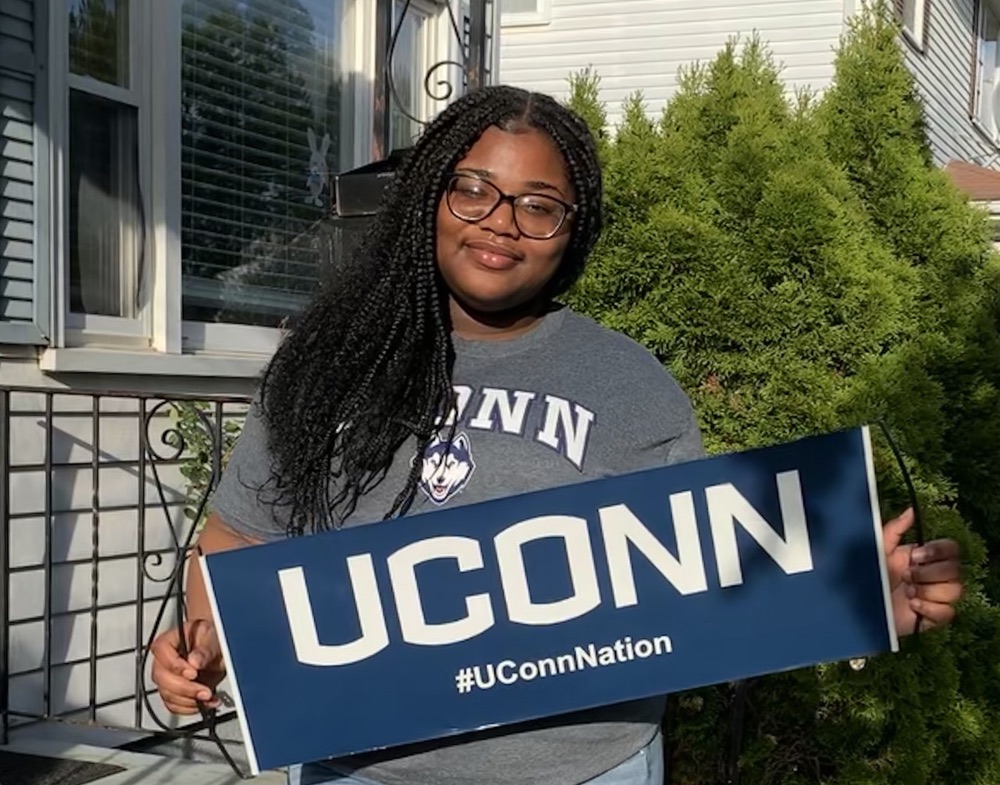
“We learned about the need to be aware of different kids’ situations and how to adapt to teaching in different environments,” she said. “We learned so much about teaching in a diverse community.
“Definitely take the class,” is her advice to other high school students. “It’s so worth it. I’m so happy I took it. The focus on actual teaching was really valuable.”
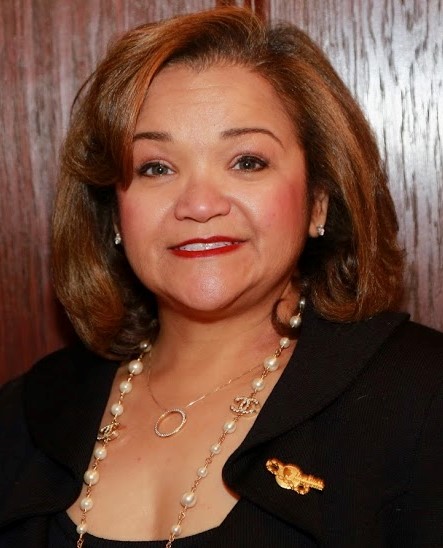
Dr. Shuana Tucker, Chief Talent Officer, at the Connecticut State Department of Education, introduced Ms. Fraioli to Educators Rising three years ago when she learned about her efforts to interest students in teaching careers.
“We are pleased to partner with the National EdRising/Phi Delta Kappa organization and the Buck Foundation to implement a proven grow-your-own model to diversify our educator pipeline here in Connecticut,” she said.
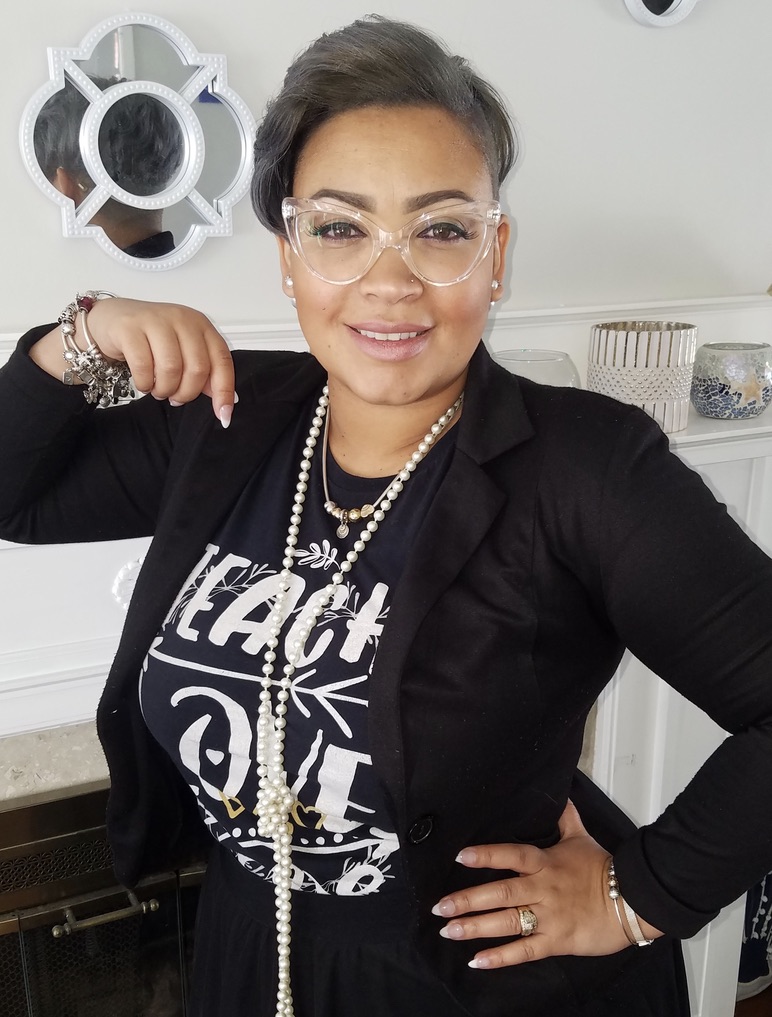
Kudos From New Britain Board Member
Dr. Violet Jiménez Sims, an Alma Exley Scholar who serves on the New Britain Board of Education, is excited by the way the program has grown from the seed she planted a decade ago.
Dr. Sims initiated and taught the Teacher Cadet course from 2010 to 2012 when she was a teacher at New Britain High School. Sandy Fraioli took over the program in 2013 and nurtured its growth over the pasts seven years. This year Dr. Sims joined the UConn faculty as associate director of teacher preparation at the Neag School.
“I am excited to see the program’s growth and evolution, and the continued support it has received,” said Dr. Sims. “My priorities as a member of the New Britain Board of Education (BOE) remain what they were when I was a teacher in the district — ensuring equity and access for all of our students.
“The EdRising program not only provides the scaffolding for diverse students to become interested in and be able to access teacher education programs, but it also provides a pipeline for bringing graduates back into our community and school system.
Graduate Teaching in New Britain
“In fact, those results are already evident,” she said. “I still keep in touch with several alumni of the first cohort I taught nearly 10 years ago. One is now an elementary school teacher in the district! I look forward to seeing more graduates who participate in this program noted on our BOE personnel reports as new hires.”
At a time when only eight percent of Connecticut public school teachers are persons of color, educators have tried a variety of efforts to achieve greater diversity at the front of the classroom. Many have recognized that efforts to recruit more teachers of color must start early. Waiting until students are in college may be too late.
Moving Into Middle School
“We also had a club at the middle school this year,” Ms. Fraioli said. “Those students are starting high school knowing they want to be teachers. The younger we start the better.
“Our students need teachers who are reflective of the population they’re working with,” she said. “Diversifying our pool of teachers is essential for all ethnicities.
“The earlier we begin planting the seeds in our students that they have the knowledge, confidence and skills to become a teacher, the more apt that they will be to pursue a career in teaching. This has to start now!”
